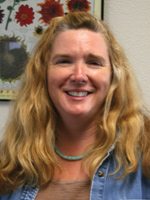When going through the process to become an organic seed operation, patience is definitely a virtue.
Making the move from conventional to organic seed production need not be complicated, and is often a transition farmers make for a variety of reasons — to seek better prices for their crops, to lessen reliance on agricultural chemicals, or a desire to use natural tools and the strengths of a farm’s own ecosystem to build a sustainable operation.
No matter the reason, when going through the process, patience is definitely a virtue, as a strict adherence to specific steps is required.
“One must have patience to listen and learn the organic process,” says Patty Buskirk, general manager of Seeds by Design and Terra Organics, a boutique seed company based in Maxwell, Calif. Established in 1994, this wholesale vegetable, flower and herb seed company contracts growers to produce quality California-grown seed crops. Terra Organics was founded in 1999 as a wholesale organic leader in vegetable and herb seed production.
“This is process certification — not product certification. Your operation needs to have processes in place to ensure the organic integrity of the organic product you are offering.”

Buskirk also says that certification can be expensive and very time consuming.
“Keep in mind that these certifying agencies are busy with many organic operations, and it takes time to begin and complete the initial certification process. And, realize that not all organic certification is harmonized or recognized.”
Technically Organic
To be considered organic, it is first necessary to know what constitutes this designation. For instance, organic seed can only come from organic plants.
“They must be produced in accordance with USDA’s organic regulations, and the farm growing the plants must be certified,” explains the United States Department of Agriculture’s National Organic Program deputy administrator Miles McEvoy.
“Organic production includes using cultural, biological and mechanical practices that support the cycling of on-farm resources, promote ecological balance and conserve biodiversity. Practices include maintaining or enhancing soil and water quality; conserving wetlands, woodlands and wildlife; and avoiding use of synthetic fertilizers, sewage sludge, irradiation and genetic engineering.”
Before making the move away from conventional production, McEvoy stresses the importance of becoming familiar with organic regulations, and to contact an accredited certifier.
With actual certification costs or fees varying widely, depending on the certifying agent and the size, type and complexity of one’s operation, it is important to understand the certifier’s fee structure and billing cycle. Typically, there is an application fee, annual renewal fee, assessment on annual production or sales, and inspection fees.

“In some cases, few changes may be needed to comply with organic regulations and, in other cases, practices might need to be adjusted to meet the organic regulations,” he says.
Jared Zystro is research and education assistant director of the Organic Seed Alliance, a nonprofit organization based in Port Townsend, Wash., which advances the ethical development and stewardship of the genetic resources of agricultural seed. He says the transition from conventional to organic seed production is similar to transitioning any conventional operation to organic.
“In short, you need to have land where no prohibited substances have been applied for three years. Then you apply to a certifier, with an Organic System Plan, which details your plan for the substances, practices and procedures you will use, how you will monitor and record your practices, and how you will prevent contamination of your products with prohibited substances.”
Zystro adds that beyond legal requirements, a seed producer looking to get into organic production will definitely want to find the best market for their seed.
“An excellent place to connect to buyers is at the Organic Seed Growers’ Conference, which takes place on February 4 to 6, 2016, in Corvallis, Oregon.”
Challenges and Pitfalls
Although the process to become an organic seed grower is based on clearly defined rules, there are pitfalls one needs to be aware of.
“For example, if a substance is applied that is not allowed, that will reset the three-year transition,” says McEvoy. “Working with a certifier during the transition can be valuable and help ensure a smooth transition to organic. There are also some great resources available, including the AMS Transitioning to Organic Production and the Sustainable Agriculture Research and Extension publication, Transitioning to Organic Production.”
Organization and record keeping is another area where growers need to be especially diligent. While this is important to any farm operation, Zystro says it becomes even more critical when transitioning only some of the land from conventional to organic.

“When running a split operation, certifiers will want to see that there is a solid plan to avoid contamination from the conventional side of the operation—including labeled, separate equipment or a thorough cleaning process.”
And since the use of synthetic materials is prohibited, unless otherwise approved by the USDA, let’s not forget the bugs.
“Seed producers used to conventional post-harvest products to address seed-borne diseases or storage pests will need to find organically approved alternatives,” says Zystro.
“Many producers struggle with managing pests and diseases organically. Pests like lygus bug and seed-borne disease can be devastating challenges for seed producers. While some organically approved products may be available for some pests and diseases, often the best strategies include a mix of measures, including carefully choosing crops that are not overly susceptible to locally prevalent pests and diseases, maintaining long rotations with non-host species to avoid disease build-up, and using trap crops and insectary crops to reduce pest pressure.”
Advice for Success
Although there are many challenges in making the transition to organic seed production, Buskirk says the biggest one is to stay ahead of pests using cultural methods, since production of seed crops takes much longer than fresh market and requires more input costs.
“You have very limited tools in your portfolio to combat weeds, disease and insects. Every organic seedsman must be very proactive and always one step ahead of the pests. Constant monitoring of crops is a must. There is no silver bullet to get you out of a pest infestation like there is in conventional production. Your soil is your best friend; a healthy organic soil can make or break your organic crop’s success.”











